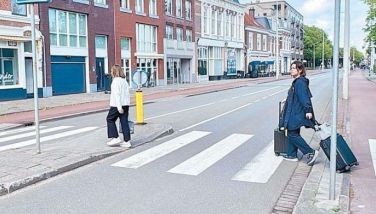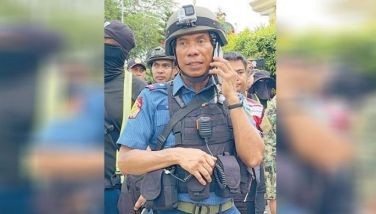The ‘Yolanda’ tragedy
It’s been a year after that fateful day on November 8, 2013 – but to this day, no one can say for certain how many people perished in the aftermath of Typhoon Yolanda. Estimates on the number of casualties are as high as 7,000 with some 1,800 missing or presumed dead – which is not too far from the projection made by police chief superintendent Elmer Soria who was eventually sacked as Eastern Visayas regional head for saying the number of fatalities could reach 10,000.
No one could have predicted the kind of devastation that Yolanda would bring, with the super typhoon now having gained infamy as the strongest ever to hit not only the Philippines but the world – whose power was described by meteorologists as “off the charts,” and that its intensity could not be tracked or handled by widely used satellite intensity scales because it has approached the “theoretical maximum intensity for any storm, anywhere.”
As some experts have noted, no amount of preparation could have spared Eastern Visayas from the intensity of the super typhoon. This was particularly true with Tacloban City that was the hardest hit because its location put it in the middle of two bodies of water that hit it with towering waves as high as five meters brought about by the storm surge – the first one coming from the direction of the Pacific Ocean through Tacloban Bay, then the second one from Cancabato Bay.
Storms, typhoons, earthquakes and other natural calamities do not choose – they can hit any country regardless of economic stature, they do not distinguish “names” nor political affiliation, neither religion nor social status. Devastating as they are, tragedies such as that wrought by super typhoon Yolanda can also bring out the best in people, seen in the way Filipinos banded together as they gave donations, volunteered time and effort to repack relief items and offered prayers for casualties as well as survivors. The response from the international community was – for lack of a better word – overwhelming, with help still pouring in until this very day to speed up the rehabilitation of the areas that were damaged.
But just as tragedy can bring out the best in people, it can also show the worst – the looting and stealing, with opportunists selling the imported food and other relief items intended for survivors. Worst of all, Filipinos witnessed the political bickering and blame shifting when the time could have been better spent doing rescue and humanitarian relief efforts.
What is really disappointing for the many victims is the seeming political undertone that continues to victimize the survivors of Typhoon Yolanda – especially the residents of Tacloban City who already felt abandoned after the typhoon and feel it once again by what they perceived to be a deliberate “snub” by the president, who did not make use of his “limited time” to visit the place most badly damaged by the typhoon.
In the news article by Rappler, the “mood meter” indicated that the story about President Aquino’s decision to skip Tacloban on the eve of the anniversary of Yolanda made the people “angry.” Although DILG Secretary Mar Roxas had told people not to read anything about the president’s actions, there is very strong perception that partisan politics has reared its ugly head once again, compassion all but lost – with many still recalling how Mar had rebuked Tacloban Mayor Alfred Romualdez in the aftermath of the tragedy over the kind of “protocol” that should be observed for relief and rescue efforts, reminding the mayor about his surname and the president’s last name. In any tragedy, names don’t count. People really couldn’t care less.
I would like to give the president the benefit of the doubt that he was merely ill advised in deciding to skip the place that suffered the most in the wake of the killer typhoon. After all, politics simply has no place in the face of tragedy of such proportion as the one we have all seen with Typhoon Yolanda.
One thing is clear: People should always remember November 8, 2013 and those who perished, not so much for the magnitude of the destruction, but because the disaster serves as a warning that climate change is a reality we must all face. With the Philippines ranked as the third most disaster-prone nation, current rehabilitation efforts must factor in the need for disaster resilience. The Tacloban mayor told delegates to the World Reconstruction Conference in Washington, D.C. that one of the most important lessons that Yolanda had taught him and his constituents is the critical role of scientific data in making cities like Tacloban disaster-resilient.
According to a report by the World Meteorological Organization, climate change has made the world more dangerous, increasing the intensity of storms and placing people in coastal areas at greater risk. Droughts and heat waves are also emerging as the “new killer,” seen in the extreme heat wave that killed 55,000 people in Russia in 2010. Droughts and famine could result in water scarcity – exacerbating poverty and hunger, while dangerous infectious diseases could emerge as erratic weather changes can alter the breeding pattern of insects and other species. Aside from the heavy death toll, economies could suffer, with climate change projected to cost the global economy $700 billion per year by 2030.
No doubt Yolanda’s lessons are bitter and painful, and it’s difficult to forget the look in the eyes of the survivors – pained, dazed, bewildered. The sun may be shining in Leyte today but the poor victims of the killer typhoon still see drops of rain — but in reality it’s the tears in their eyes.
* * *
Email: babeseyeview@yahoo.com
- Latest
- Trending





























